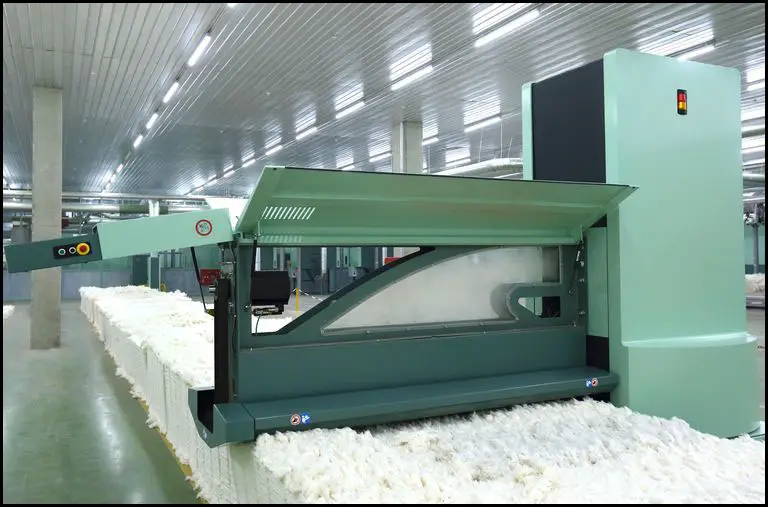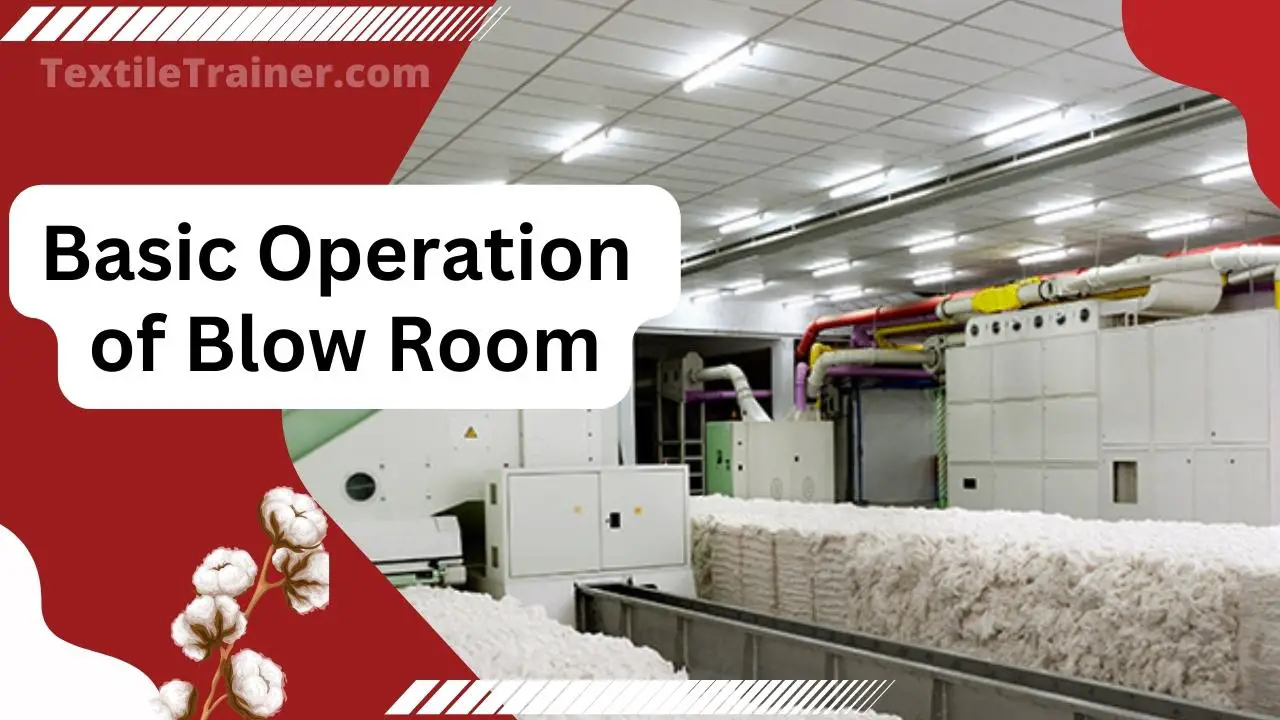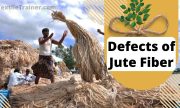Introduction:
Cotton is an important component of global textile production, providing raw materials for various products. The versatility and comfort of cotton have made it a popular choice for consumers throughout the world, from apparel to home textiles. Cotton must undergo a series of intricate processes to remove impurities and ensure optimal fiber quality before it can be transformed into these high-quality fibers. This comprehensive guide explores the basic operation of blow room and key requirements for efficient cotton fiber processing in the blow room, where the initial preparation of cotton fiber processing takes place. This article aims to provide valuable insight into the role and significance of the blow room in the overall cotton fiber processing chain, whether you’re a textile industry professional seeking to expand your knowledge or a curious enthusiast eager to learn more about cotton fiber processing or production. The blow room forms the basis in subsequent processing stages like carding, combing, and spinning. Its primary function is to clean and open cotton fibers, removing dirt, dust, seeds, and short fibers. With the blow room, various machines work together to accomplish these tasks, optimizing fiber quality and enabling the production of superior textile products. By achieving this initial level of purification, the blow room ensures the subsequent processes can run smoothly. You must understand the operation and coordination of the machines in the blow room to keep it running efficiently and effectively. Each machine serves a specific purpose: opening cotton bales, removing contaminants, and conveying fibers from one machine to another.
Furthermore, this article will describe the basic operation and key requirements for processing cotton fibers in the blow room. In addition to maintaining cleanliness and quality control throughout the process, these requirements encompass factors like optimal humidity and temperature levels, appropriate machine settings, and appropriate machine settings. Textile manufacturers can boost productivity, minimize downtime, and ensure consistency of fiber quality by adhering to these requirements. Whether you are involved in the cotton processing industry or simply curious about the intricate operations behind the garments and textiles we use daily, this comprehensive guide will equip you with the knowledge you need to understand the basic operation of the blow room and the essential requirements for processing cotton fibers. Discover how the blow room contributes to high-quality cotton fiber production as we unravel its complexities.

Basic Operation of Blow Room/Basic Function of Blow Room:
The blow room serves as the gateway to the subsequent stages of cotton processing, laying the foundation for achieving optimal fiber quality. With the blow room, impurities are removed and cotton fibers are opened to facilitate further processing, resulting in high-quality textiles being produced. Listed below are some of the most important functions of a blow room:
1. Opening:
We receive the bales in the blow room of a short staple spinning mill, which weigh and measure very much in relation to their output product, yarn, which is very large. As a result, the larger fiber package size of the bale must be reduced gradually to the desired smaller yarn size, ensuring optimal process integration. This primary function of the blow room is fulfilled by the opening.
2. Cleaning:
It is important to remove these impurities at the early stage of spinning system since these impurities lower the process performance and product quality. Natural fibers except MMF contain impurities in the bales. Cleaning ensures that impurities are removed from the fiber assembly in the blow room.
3. Dust Removal or De-Dusting:
The process of removing dust particles is called de-dusting. De-dusting machines are placed before carding machines. Dust removal is not an easy operation because the dust particles are completely enclosed within the flocks and they remain within the flocks during suction because the surrounding fibers act as a filter to keep them contained. It has been proven that the smaller the tufts size, the more dust can be removed through the suction units. Therefore, the de-dusting unit should be cleaned after intensive opening.
Today, most spinning machine manufacturers provide a blow room with dust-removing equipment or machines along with cleaning and opening equipment as part of their standard blow room line. Thus, dust elimination occurs throughout the spinning process. An experiment conducted by Truezschler GmbH illustrates the importance of a de-dusting unit.
| Process stage | AFIS Dust particle/g |
| Cleanomat CL-C4 | 130 |
| Dust Tex Sp-DX | 98 |
| Securo Mat Sp-F | 92 |
| Process Stage | YF/100 km |
| Without Dust TEX | 19.5 |
| With Dust Tex | 15.5 |
4. Blending:
Fiber blending is an essential part of the yarn production process. Fibers can be blended at various stages. However, blending at the beginning of the process is crucial, since the individual components are still available separately and can therefore be measured accurately and without relying on random effects. A well-managed and assembled bale layout as well as simultaneous fiber extraction from all bales is, therefore, of utmost importance. After extracting separate tufts from individual bales of the layout, intensive blending must be carried out with a suitable blending machine. The tufts of fibers must be collected before mixing them and delivered after mixing them thoroughly during this blending operation.
5. Even Feed to Card Materials:
As a final step, the blow room must ensure that raw materials are evenly delivered to the cards. This was previously accomplished by using precisely weighed laps from the scutcher, but now tuft feeding systems are used automatically. Although chute feed systems had difficulty delivering tufts evenly in the past, they now work well. It is the card machine that delivers a cohesive intermediate product in modern spinning installations. In addition to being very even and free from faults, the product is expected to be as fault-free as possible. Irregularities can be traced directly to the yarn. A fault-free sliver cannot be obtained unless the feedstock is in an adequate condition, since every irregularity in the feedstock is transmitted into the sliver-in an elongated form owing to the draft. A distributor unit transports tufts pneumatically into the chutes of several cards. The feed material for cards must be equally thick, evenly distributed throughout the chute, and of equal density in order to prepare and obtain even feed for all cards. The feedstock of high-performance cards also must be very open. As a result of the very good openness of the feed material, the card has a huge performance advantage over conventional machines. The higher the loading of the clothing (600 to 900 ktex) the greater the throughput of material, and the finer the opening of the material the better the throughput.
6. Recycling of Waste:
Recycling of waste is another additional function that needs to be carried out. Usable soft waste can be used for maximizing raw material utilization, thus reducing the yarn’s cost, and this is the type of waste that is better to be used in the blow room. It is important to consider the flexibility of the machine installation in order to achieve the raw material production.
Key Requirement for Basic Function/Operation of Blow Room:
It is a very important aspect of the blow room, the opening and cleaning of which are performed through the optimalization of the performance of the raw materials and the machine. This is discussed in detail below:
1. Performance of The Raw Material
- With optimal careful treatment of the raw material: Cleaning and opening treatment should not severely deteriorate fiber properties. In order to achieve the highest level of cleanliness and minimize fiber deterioration, the degree of treatment should be to the extent that the objectives of clean-open machines are achieved.
- With maximum utilization of the raw material: The raw material realization is an extremely important factor in the blow room, since it contributes to a major portion of the final product’s price. For example, cleaning can be achieved at a higher level with less raw material realization.
- With maximum assuring the optimal level of quality: To meet the quality requirements of customers, blow rooms should not be undersized or oversized to meet the customer’s needs. In the event that the undersize degree of function does not meet customer satisfaction on quality, he will not pay the product’s price. In the event that the oversize degree of function meets customer satisfaction, he will not pay for the oversize degree of function.
2. Performance of the Machine
- High operational efficiency: In order for the machine to perform effectively, it must have a high level of efficiency.
- High economy: The functions have to be fulfilled from the point of view of the machine’s economic perspective, in other words, from the perspective of its power consumption, longevity, and performance of service.
- High flexibility: In order to ensure the flexibility of multiple processes, a module design is required.
- Machines of ergonomic design: Machines designed in an ergonomic manner, that is, that are safe and easy to handle, maintenance friendly, reproducible and stable in their settings.
Conclusion:
The basic function of a blow room and the key requirements for efficient cotton fiber processing have been discussed in this article. As a critical part of the production of high-quality textile products, the blow room plays a crucial role in removing impurities and opening cotton fibers, as well as serving as a foundation for subsequent processing stages. If you have any questions about this article, please do not hesitate to ask.
References
- Belal, P. D. (2009). Understanding Textiles for a Merchandiser . Dhaka: L. B Graphics and Printing.
- Chowdhury, M. F. (2016). Manual of Short Staple Spinning. Dhaka: Granthanir Prokashoni.
- Corbman, D. P. (1983). Textiles Fiber to Fabric. NewYork: Mary McGarry.
- Hossain, M. S. (2014). Introduction to Textile Engineering. Dhka: Books Fair Publications.
- Kadolph, S. J. (2006). Textiles. New Delhi: Dorling Kindersley India Pvt. Ltd.
- Siddique, D. H. (n.d.). Natutal Fibers. Dhaka: Hafiz Book Center.







Looking forward to reading more. Great blog article.Really looking forward to read more. Fantastic.
thanks for comments.
I think this is a real great article post.Really thank you! Really Great.
thanks too…..please support us.
Im grateful for the blog.Really looking forward to read more. Great.
keep visit our site…..
I loved your article. Awesome.
keep visit our site..
I really liked your article post. Really Cool.
thanks…..
Very neat blog post. Awesome.
keep visit our site…..
I am so grateful for your article post.Really thank you! Really Cool.
thanks too
wow, awesome blog.Much thanks again. Great.
keep visit our site.
I value the blog article.Really thank you! Awesome.
keep visit our site.
Remarkable! Its really amazing post, I have got much clear idea about from this article.
please support us.
Very informative article post.
When someone writes an article he/she maintains the thought of a user in his/herbrain that how a user can be aware of it.Thus that’s why this post is outstdanding. Thanks!
Thanks
Really informative blog article.Much thanks again. Want more.
Thank you for your blog article. Great.
thanks too…
I think this is a real great article post.Thanks Again. Fantastic.
please support us……
Very good blog article.Thanks Again.
Im thankful for the blog.Much thanks again. Cool.
Enjoyed every bit of your post.Much thanks again. Keep writing.
Great blog post.Thanks Again. Great.
Really informative article. Much obliged.
keep visit our site..
Great article post.Thanks Again. Fantastic.
keep visit our site.
Thanks a lot for the post.Much thanks again. Keep writing.
I am so grateful for your article post.Really thank you! Keep writing.
A round of applause for your blog article.Much thanks again. Will read on…
Hey, thanks for the blog.Really looking forward to read more. Will read on…
Thanks so much for the article post.Thanks Again. Will read on…
Im grateful for the blog article. Keep writing.
Thanks again for the blog article. Great.
wow, awesome blog article.Really looking forward to read more. Really Great.
I really liked your post.Much thanks again. Will read on…
Major thanks for the blog article.Really looking forward to read more. Great.
Im grateful for the blog.Much thanks again. Fantastic.
Really appreciate you sharing this post.Really thank you! Really Great.
Great post.Really looking forward to read more. Much obliged.
I appreciate you sharing this blog post. Cool.
I truly appreciate this article post.Thanks Again. Awesome.
I really liked your article post. Want more.
Major thanks for the post.Thanks Again. Awesome.
Thanks for the blog article.Really thank you! Keep writing.
Muchos Gracias for your article.Thanks Again. Really Great.
Looking forward to reading more. Great blog. Cool.
A round of applause for your post.Really looking forward to read more. Really Cool.
Really enjoyed this article post.Really looking forward to read more. Cool.
Thanks for sharing, this is a fantastic article.Really thank you! Much obliged.
This is one awesome article post.Thanks Again. Will read on…
Thanks so much for the post.Much thanks again. Awesome.
I really enjoy the article post.Thanks Again. Cool.
Enjoyed every bit of your blog post.Much thanks again. Really Great.
I think this is a real great blog post.Thanks Again. Much obliged.
Really informative article. Really Cool.
Wow, great article post. Really Cool.
I am so grateful for your post. Want more.
I think this is a real great blog article.Really looking forward to read more. Great.
Very neat post.Really thank you! Will read on…
Wow, great blog.Much thanks again. Much obliged.
I appreciate you sharing this article post.Really thank you! Cool.
Very informative blog article.Really looking forward to read more. Will read on…
Wow, great article.Really thank you! Awesome.
Really enjoyed this blog.Really looking forward to read more.
Really enjoyed this blog post. Fantastic.
Very good article. Much obliged.
Enjoyed every bit of your article. Want more.
Really appreciate you sharing this post.Really looking forward to read more.
Major thanks for the article post.Really looking forward to read more. Really Cool.
I really enjoy the blog.Thanks Again. Really Great.
I really like and appreciate your blog.Much thanks again. Fantastic.
Thank you for your article post. Great.
wow, awesome blog article.Really thank you! Want more.
Very good blog article.Thanks Again. Really Great.
Major thanks for the article post.Really thank you! Want more.
Thank you ever so for you article post.Really thank you! Want more.
I value the post.Much thanks again. Fantastic.
I used to be able to find good advice from your articles.
wow, awesome article. Want more.
Really enjoyed this blog.Really thank you! Really Cool.
Wow, great blog.Thanks Again. Really Cool.
A big thank you for your article post. Really Cool.
I appreciate you sharing this blog article.Thanks Again. Great.
Thanks again for the blog post.Really thank you!
Enjoyed every bit of your blog.Thanks Again. Cool.
Im grateful for the post. Will read on…
Very good blog.Really looking forward to read more. Fantastic.
Hey, thanks for the article.Thanks Again.
Very informative blog.Thanks Again. Much obliged.
Great blog article. Keep writing.
Wow, great blog post. Will read on…
Major thanks for the blog post.Much thanks again. Cool.Loading…
Great, thanks for sharing this blog. Great.
I loved your blog.Thanks Again. Really Cool.
Really appreciate you sharing this post.Really thank you! Awesome.
Say, you got a nice article. Really Cool.
I really like and appreciate your blog.Thanks Again. Will read on…
Very neat blog article.Thanks Again. Will read on…
Very neat article post. Keep writing.
Thanks
Thank you ever so for you post. Cool.
Enjoyed every bit of your blog.Much thanks again. Cool.
Really informative blog article.Thanks Again. Want more.
I appreciate you sharing this article post.Thanks Again. Really Cool.
I am so grateful for your post.Thanks Again.
I really enjoy the blog post. Much obliged.
Fantastic post.Really thank you! Great.
Looking forward to reading more. Great article post. Keep writing.
I value the blog article. Keep writing.
Really enjoyed this blog post. Fantastic.
Very neat article post.
I appreciate you sharing this article post. Really Great.
Im thankful for the blog. Great.
Looking forward to reading more. Great article post. Awesome.
Awesome article.Much thanks again.
Hey, thanks for the article post.Really looking forward to read more. Awesome.
I am so grateful for your blog article.Really looking forward to read more. Keep writing.
I really enjoy the blog article.Thanks Again. Really Cool.
Im obliged for the blog article. Fantastic.
Really appreciate you sharing this blog post.Really thank you! Keep writing.
Im thankful for the blog.Really thank you! Really Cool.
Major thankies for the blog post.Really looking forward to read more. Keep writing.
Thanks again for the blog article. Really Great.
Very informative article post.Thanks Again. Really Cool.
Thanks so much for the article.Really thank you! Will read on…
Thanks for sharing, this is a fantastic post.Really looking forward to read more. Fantastic.
I truly appreciate this blog post.Thanks Again.
I really enjoy the article.Much thanks again. Really Great.
Appreciate you sharing, great blog.Really thank you!